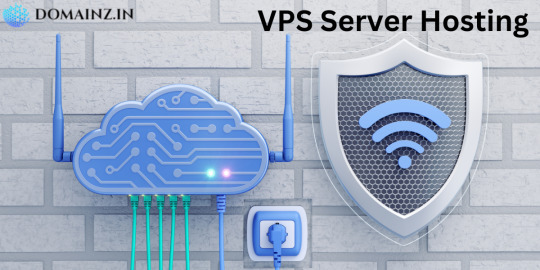#scalable database solutions
Explore tagged Tumblr posts
Text
Data Unbound: Embracing NoSQL & NewSQL for the Real-Time Era.
Sanjay Kumar Mohindroo Sanjay Kumar Mohindroo. skm.stayingalive.in Explore how NoSQL and NewSQL databases revolutionize data management by handling unstructured data, supporting distributed architectures, and enabling real-time analytics. In today’s digital-first landscape, businesses and institutions are under mounting pressure to process massive volumes of data with greater speed,…
#ACID compliance#CIO decision-making#cloud data platforms#cloud-native data systems#column-family databases#data strategy#data-driven applications#database modernization#digital transformation#distributed database architecture#document stores#enterprise database platforms#graph databases#horizontal scaling#hybrid data stack#in-memory processing#IT modernization#key-value databases#News#NewSQL databases#next-gen data architecture#NoSQL databases#performance-driven applications#real-time data analytics#real-time data infrastructure#Sanjay Kumar Mohindroo#scalable database solutions#scalable systems for growth#schema-less databases#Tech Leadership
0 notes
Text

Boost performance with a scalable database solution. Explore expert database development services to enhance security, efficiency, and growth.
0 notes
Text
VastEdge offers MySQL Cloud Migration services, enabling businesses to smoothly transition their MySQL databases to the cloud. Benefit from enhanced performance, scalability, and security with our expert migration solutions. Migrate your MySQL databases with minimal downtime and zero data loss.
#MySQL cloud migration#cloud database migration#VastEdge MySQL services#MySQL migration solutions#secure MySQL migration#cloud database performance#scalable cloud solutions#minimal downtime migration#MySQL cloud scalability#MySQL data migration
0 notes
Text
Navigating Cloud Databases: Azure Cosmos DB and AWS Aurora in Focus
When embarking on new software development projects, choosing the right database technology is pivotal. In the cloud-first world, Azure Cosmos DB and AWS Aurora stand out for their unique offerings. This article explores these databases through practical T-SQL code examples and applications, guiding you towards making an informed decision. Azure Cosmos DB, a globally distributed, multi-model…
View On WordPress
#Azure Cosmos DB vs AWS Aurora#cloud databases comparison#database scalability solutions#global distribution databases#T-SQL examples
0 notes
Text

I genuinely cannot believe I’m saying this and that it is not a top-of-the-page headline story across the country, but the US Army just swore in four tech executives as Lieutenant Colonels: Shayam Sankar, the CTO of Palantir (Peter Thiel’s company), Andrew Bosworth, the CTO of Meta (Mark Zuckerberg’s company) and OpenAI’s chief product officer Kevin Weil and former chief research officer Bob McGrew, (the company belonging to Sam Altman.)
These four men are all now one rank away from a General. Second-in-command for field-grade officers. There are 16 ranks lower than a Lieutenant Colonel and these four untrained civilians just leapfrogged over soldiers who have dedicated their entire career and lives to the US military. Apparently, these men are going to work on “targeted projects to help guide rapid and scalable tech solutions to complex problems.”
A sentence that means absolutely nothing because clearly this is just a way of giving these companies access to top-secret information without them having to go through any pesky background checks. If that doesn’t scare you, it really should, because we already know that Palantir is building a massive centralized database using much of the information they acquired from DOGE, Elon Musk’s foray into the American government.
These billionaire tech-bros are compiling lists of our most sensitive information. Our tax records, medical data, bank accounts, Social Security information, immigration status, etc. This administration is allowing them to build the infrastructure for techno-feudalism. Authoritarianism in the form of data and surveillance.
It is a horrifying and blatant conflict of interest that harms the safety and security of all Americans. There should not be this much overlap between private tech and the US government, certainly not between private tech and the US military. I do not know how asleep at the wheel Congress can possibly be. But they should be shutting this down immediately and every single one of us should be demanding that they do it.
[Barry Caldwell]
#Barry Caldwell#Palantir#Banana Republic#DOGE#the US Military#conflict of interest#corruption#Peter Thiel
27 notes
·
View notes
Text
Dungeon Meshi Chapter 4
What was it like to read this series as it came out? This chapter feels like Kui is trying to address complaints about Marcille's usefulness.
The chapter image implies Marcille and Falin went to the same magic school. I assume the book in the bottom-left corner is the one Marcille refers to on how to pluck Mandrakes.

Looking back on all the chapters so far, Marcille has spent much of the journey complaining about the whole "Eating monsters" thing and hasn't actually contributed anything to the journey. In fact, I'd say she's mostly been a detriment since she had to get saved from a slime and a man-eating plant.
(Granted, Chilchuck also hasn't done anything of value, but he also hasn't needed rescuing, required the party to rest, or been complaining about things.)
And Marcille is acutely aware that she's not been helpful at all. She is so desperate throughout this chapter to show that her magic and education can help everyone.

The elaborate and highly inefficient method for harvesting madrakes in Marcille's book vs the very simple way Senshi harvests them kind of is reminding me about something that was talked about recently in a databases class I'm currently taking.
The problem the professor went over was "We have n number of CPUs we could divide our data between to speed up processing. We can make a lookup table that decides which CPU should be given which datapoint based on a cross reference of two fields in each datapoint. How do we ensure we maximize our CPU usage?"
The professor showed us what they called the "PhD student solution" which involved an elaborate pattern algorithm that causes you to build your lookup table in a complex snaking pattern. And in the end, the method is better at the things the existing methods were bad at but worse at solving problems that existing methods were already great at.
Then the professor showed us the "15 years experience" solution which used very simple calculations and was a light modification of the existing methods which allowed it to keep the strengths of the existing method and managed to avoid most of the issues with the existing method. The solution was elegant, easy to follow and replicate, and it was scalable to higher values of n and higher dimensional tables.
Anyway, Marcille's book is a PhD student solution. It works, but it was made by someone who was looking for a flashy solution that would get people's attention. How many dogs died because of this person's methods? Laios's solution sounds dumb but it's likely far better than Marcille's. Maybe the solution could just be to magic up a silence field so the Mandrakes can't make any noise when they scream.
Meanwhile, Senshi has the practical 15 years experience solution.

And Marcille decides to go through an elaborate process to show the value of the elaborate method as one might expect a PhD student to do.
Whatever Marcille was going to cast in chapter 2, it was different from what she cast this chapter. The runes she speaks are different and I can't find anything that looks the same.
That heart-to-heart was nice. Marcille wants to be the reliable one who can resolve every issue they encounter. But Laios doesn't want to exhaust Marcille by making her handle every situation they encounter. Being the reliable one all the time is exhausting; it's good to be able to defer to others in situations you're not the most capable in.
I was equally as shocked as Marcille when Laios said this. And this explains so much about the things I thought were strange about the basilisk.

If the chicken is the tail, then it doesn't actually matter that it was a rooster. It doesn't actually determine the basilisk's role in reproduction.
Nice touch putting a name and face to the basilisk researcher. It makes this world a little more alive that there is a person we can tie this silly fact to rather than it just being an arbitrarily known thing.

I noticed but didn't call him out on it last chapter, but I'm going to call him out this time: Senshi refers to Marcille as "the Elf-girl". And he only started calling her by her name when it turned out the mandrake she plucked tasted better than the mandrakes plucked with Senshi's methods.
Senshi's method is definitely the most practical way to handle killing mandrakes but it turns out that it's not the best way to harvest them. Meanwhile Marcille's method is flashy and harvests better quality mandrakes, but is overall too complex to be useful and still worse in general than Senshi's method.
If monster cuisine becomes a mainstream concept, maybe one day someone will find an effective method to harvest better quality mandrakes (Silence field).
I could hear the "beeowoop" on that last panel.

back
14 notes
·
View notes
Text
KIOXIA Unveils 122.88TB LC9 Series NVMe SSD to Power Next-Gen AI Workloads

KIOXIA America, Inc. has announced the upcoming debut of its LC9 Series SSD, a new high-capacity enterprise solid-state drive (SSD) with 122.88 terabytes (TB) of storage, purpose-built for advanced AI applications. Featuring the company’s latest BiCS FLASH™ generation 8 3D QLC (quad-level cell) memory and a fast PCIe® 5.0 interface, this cutting-edge drive is designed to meet the exploding data demands of artificial intelligence and machine learning systems.
As enterprises scale up AI workloads—including training large language models (LLMs), handling massive datasets, and supporting vector database queries—the need for efficient, high-density storage becomes paramount. The LC9 SSD addresses these needs with a compact 2.5-inch form factor and dual-port capability, providing both high capacity and fault tolerance in mission-critical environments.
Form factor refers to the physical size and shape of the drive—in this case, 2.5 inches, which is standard for enterprise server deployments. PCIe (Peripheral Component Interconnect Express) is the fast data connection standard used to link components to a system’s motherboard. NVMe (Non-Volatile Memory Express) is the protocol used by modern SSDs to communicate quickly and efficiently over PCIe interfaces.
Accelerating AI with Storage Innovation
The LC9 Series SSD is designed with AI-specific use cases in mind—particularly generative AI, retrieval augmented generation (RAG), and vector database applications. Its high capacity enables data-intensive training and inference processes to operate without the bottlenecks of traditional storage.
It also complements KIOXIA’s AiSAQ™ technology, which improves RAG performance by storing vector elements on SSDs instead of relying solely on costly and limited DRAM. This shift enables greater scalability and lowers power consumption per TB at both the system and rack levels.
“AI workloads are pushing the boundaries of data storage,” said Neville Ichhaporia, Senior Vice President at KIOXIA America. “The new LC9 NVMe SSD can accelerate model training, inference, and RAG at scale.”
Industry Insight and Lifecycle Considerations
Gregory Wong, principal analyst at Forward Insights, commented:
“Advanced storage solutions such as KIOXIA’s LC9 Series SSD will be critical in supporting the growing computational needs of AI models, enabling greater efficiency and innovation.”
As organizations look to adopt next-generation SSDs like the LC9, many are also taking steps to responsibly manage legacy infrastructure. This includes efforts to sell SSD units from previous deployments—a common practice in enterprise IT to recover value, reduce e-waste, and meet sustainability goals. Secondary markets for enterprise SSDs remain active, especially with the ongoing demand for storage in distributed and hybrid cloud systems.
LC9 Series Key Features
122.88 TB capacity in a compact 2.5-inch form factor
PCIe 5.0 and NVMe 2.0 support for high-speed data access
Dual-port support for redundancy and multi-host connectivity
Built with 2 Tb QLC BiCS FLASH™ memory and CBA (CMOS Bonded to Array) technology
Endurance rating of 0.3 DWPD (Drive Writes Per Day) for enterprise workloads
The KIOXIA LC9 Series SSD will be showcased at an upcoming technology conference, where the company is expected to demonstrate its potential role in powering the next generation of AI-driven innovation.
2 notes
·
View notes
Text
Crafting Web Applications For Businesses Which are Responsive,Secure and Scalable.
Hello, Readers!
I’m Nehal Patil, a passionate freelance web developer dedicated to building powerful web applications that solve real-world problems. With a strong command over Spring Boot, React.js, Bootstrap, and MySQL, I specialize in crafting web apps that are not only responsive but also secure, scalable, and production-ready.
Why I Started Freelancing
After gaining experience in full-stack development and completing several personal and academic projects, I realized that I enjoy building things that people actually use. Freelancing allows me to work closely with clients, understand their unique challenges, and deliver custom web solutions that drive impact.
What I Do
I build full-fledged web applications from the ground up. Whether it's a startup MVP, a business dashboard, or an e-commerce platform, I ensure every project meets the following standards:
Responsive: Works seamlessly on mobile, tablet, and desktop.
Secure: Built with best practices to prevent common vulnerabilities.
Scalable: Designed to handle growth—be it users, data, or features.
Maintainable: Clean, modular code that’s easy to understand and extend.
My Tech Stack
I work with a powerful tech stack that ensures modern performance and flexibility:
Frontend: React.js + Bootstrap for sleek, dynamic, and responsive UI
Backend: Spring Boot for robust, production-level REST APIs
Database: MySQL for reliable and structured data management
Bonus: Integration, deployment support, and future-proof architecture
What’s Next?
This blog marks the start of my journey to share insights, tutorials, and case studies from my freelance experiences. Whether you're a business owner looking for a web solution or a fellow developer curious about my workflow—I invite you to follow along!
If you're looking for a developer who can turn your idea into a scalable, secure, and responsive web app, feel free to connect with me.
Thanks for reading, and stay tuned!
2 notes
·
View notes
Text
Integrating Third-Party Tools into Your CRM System: Best Practices
A modern CRM is rarely a standalone tool — it works best when integrated with your business's key platforms like email services, accounting software, marketing tools, and more. But improper integration can lead to data errors, system lags, and security risks.

Here are the best practices developers should follow when integrating third-party tools into CRM systems:
1. Define Clear Integration Objectives
Identify business goals for each integration (e.g., marketing automation, lead capture, billing sync)
Choose tools that align with your CRM’s data model and workflows
Avoid unnecessary integrations that create maintenance overhead
2. Use APIs Wherever Possible
Rely on RESTful or GraphQL APIs for secure, scalable communication
Avoid direct database-level integrations that break during updates
Choose platforms with well-documented and stable APIs
Custom CRM solutions can be built with flexible API gateways
3. Data Mapping and Standardization
Map data fields between systems to prevent mismatches
Use a unified format for customer records, tags, timestamps, and IDs
Normalize values like currencies, time zones, and languages
Maintain a consistent data schema across all tools
4. Authentication and Security
Use OAuth2.0 or token-based authentication for third-party access
Set role-based permissions for which apps access which CRM modules
Monitor access logs for unauthorized activity
Encrypt data during transfer and storage
5. Error Handling and Logging
Create retry logic for API failures and rate limits
Set up alert systems for integration breakdowns
Maintain detailed logs for debugging sync issues
Keep version control of integration scripts and middleware
6. Real-Time vs Batch Syncing
Use real-time sync for critical customer events (e.g., purchases, support tickets)
Use batch syncing for bulk data like marketing lists or invoices
Balance sync frequency to optimize server load
Choose integration frequency based on business impact
7. Scalability and Maintenance
Build integrations as microservices or middleware, not monolithic code
Use message queues (like Kafka or RabbitMQ) for heavy data flow
Design integrations that can evolve with CRM upgrades
Partner with CRM developers for long-term integration strategy
CRM integration experts can future-proof your ecosystem
#CRMIntegration#CRMBestPractices#APIIntegration#CustomCRM#TechStack#ThirdPartyTools#CRMDevelopment#DataSync#SecureIntegration#WorkflowAutomation
2 notes
·
View notes
Text
Cloud Migration and Integration A Strategic Shift Toward Scalable Infrastructure
In today’s digital-first business environment, cloud computing is no longer just a technology trend—it’s a foundational element of enterprise strategy. As organizations seek greater agility, scalability, and cost-efficiency, cloud migration and integration have emerged as critical initiatives. However, transitioning to the cloud is far from a lift-and-shift process; it requires thoughtful planning, seamless integration, and a clear understanding of long-term business objectives.

What is Cloud Migration and Why Does It Matter
Cloud migration involves moving data, applications, and IT processes from on-premises infrastructure or legacy systems to cloud-based environments. These environments can be public, private, or hybrid, depending on the organization’s needs. While the move offers benefits such as cost reduction, improved performance, and on-demand scalability, the true value lies in enabling innovation through flexible technology infrastructure.
But migration is only the first step. Cloud integration—the process of configuring applications and systems to work cohesively within the cloud—is equally essential. Without integration, businesses may face operational silos, inconsistent data flows, and reduced productivity, undermining the very purpose of migration.
Key Considerations in Cloud Migration
A successful cloud migration depends on more than just transferring workloads. It involves analyzing current infrastructure, defining the desired end state, and selecting the right cloud model and service providers. Critical factors include:
Application suitability: Not all applications are cloud-ready. Some legacy systems may need reengineering or replacement.
Data governance: Moving sensitive data to the cloud demands a strong focus on compliance, encryption, and access controls.
Downtime management: Minimizing disruption during the migration process is essential for business continuity.
Security architecture: Ensuring that cloud environments are resilient against threats is a non-negotiable part of migration planning.
Integration for a Unified Ecosystem
Once in the cloud, seamless integration becomes the linchpin for realizing operational efficiency. Organizations must ensure that their applications, databases, and platforms communicate efficiently in real time. This includes integrating APIs, aligning with enterprise resource planning (ERP) systems, and enabling data exchange across multiple cloud platforms.
Hybrid and Multi-Cloud Strategies
Cloud strategies have evolved beyond single-provider solutions. Many organizations now adopt hybrid (combining on-premise and cloud infrastructure) or multi-cloud (using services from multiple cloud providers) approaches. While this enhances flexibility and avoids vendor lock-in, it adds complexity to integration and governance.
To address this, organizations need a unified approach to infrastructure orchestration, monitoring, and automation. Strong integration frameworks and middleware platforms become essential in stitching together a cohesive IT ecosystem.
Long-Term Value of Cloud Transformation
Cloud migration and integration are not one-time projects—they are ongoing transformations. As business needs evolve, cloud infrastructure must adapt through continuous optimization, cost management, and performance tuning.
Moreover, integrated cloud environments serve as the foundation for emerging technologies like artificial intelligence, data analytics, and Internet of Things (IoT), enabling businesses to innovate faster and more efficiently.
By treating cloud migration and integration as strategic investments rather than tactical moves, organizations position themselves to stay competitive, agile, and future-ready.
#CloudMigration#CloudIntegration#DigitalTransformation#HybridCloud#MultiCloud#CloudComputing#InfrastructureModernization#ITStrategy#BusinessContinuity
2 notes
·
View notes
Text
Custom Software Development Services in Canada – Haya Solutions
Haya Solutions provides professional software development services tailored to meet your business needs. From cloud-based solutions to mobile and desktop applications, we design, develop, and support scalable software that drives efficiency and innovation. Our team works closely with clients to understand their processes, challenges, and goals, delivering high-performance solutions with long-term value. We specialise in custom software, system integrations, database development, and cross-platform compatibility. Whether you're modernising existing systems or building new ones from scratch, Haya Solutions is your trusted Canadian partner for reliable and cost-effective software development services that grow with your business.
3 notes
·
View notes
Text
Why Your Business Might Be Falling Behind Without AI App Development or Modern Web Solutions
In today’s fast-paced digital landscape, staying competitive isn’t just about having an online presence — it’s about having the right kind of presence. Many businesses invest in a website or a mobile app and stop there. But without integrating AI app development services and scalable, intelligent business web development services, they risk falling behind.
So, what’s causing this gap, and how can businesses close it?
The Real Challenge: Businesses Aren’t Evolving with User Expectations
User behavior has dramatically changed over the last few years. Customers expect fast, personalized, and intuitive digital experiences. They want websites that respond to their needs, apps that understand their preferences, and services that anticipate their next move. Businesses that are still running on legacy systems or using outdated platforms simply can’t meet these rising expectations.
Let’s say a user visits your website to schedule a consultation or find a product. If your system takes too long to load or offers no AI-driven suggestions, you’ve already lost them — probably to a competitor that’s already using AI app development services to enhance user interaction.
The Role of AI in Transforming Business Applications
Artificial Intelligence is no longer limited to tech giants. From personalized product recommendations to intelligent customer service chatbots, AI app development services are helping businesses of all sizes create smart, responsive applications.
Some examples of what AI can do in a business app include:
Automating repetitive customer queries
Offering personalized product or content recommendations
Identifying user behavior patterns and adapting accordingly
Reducing human errors in backend processes
By integrating AI into mobile or web apps, companies can streamline operations, improve customer satisfaction, and gain deeper insights into user behavior. And as these capabilities become the new norm, not having them means you’re offering a subpar experience by default.
The Foundation: Scalable Business Web Development Services
While AI powers intelligence, you still need a strong digital infrastructure to support it. This is where business web development services come in.
A well-developed business website isn’t just about looking good. It should be:
Responsive: accessible and easy to navigate on all devices
Scalable: ready to handle increased traffic or new features without a full rebuild
Secure: with updated protocols to protect user data
Fast: with optimized loading times for better user retention
These elements don’t just “happen.” They require planning, strategy, and expertise. Modern business web development services help create these experiences, combining functionality with user-centric design.
Let’s not forget the importance of backend systems either — inventory management, CRM integration, user databases, and more all need to run smoothly in the background to support the front-end user experience.
Why the Gap Still Exists
Despite the availability of these technologies, many businesses hesitate to adopt them. Common reasons include:
Fear of high development costs
Uncertainty about where to start
Lack of technical knowledge or internal teams
Belief that AI and advanced web systems are “only for big companies”
But these concerns often stem from a lack of awareness. Platforms like Fenebris India are already offering tailored AI app development services and business web development services that cater specifically to startups, SMBs, and growing enterprises — without the hefty price tag or complex jargon.
The key is to think in terms of long-term growth rather than short-term fixes. A custom-built AI-enabled app or a modern, scalable web system may require some upfront investment, but it significantly reduces future inefficiencies and technical debt.
How to Start Evolving Your Digital Strategy
If you're not sure where to begin, consider these initial steps:
Audit your current digital presence: What features are outdated or missing?
Identify customer pain points: Are users dropping off before completing actions? Are your support channels responsive enough?
Define your goals: Do you want more engagement, smoother operations, better insights?
Consult experts: Work with a team that understands both AI and business development needs.
You don’t have to overhaul everything at once. Even small changes — like adding a chatbot, integrating AI for personalized content, or improving page speed — can have a significant impact.
Final Thoughts
The future belongs to businesses that adapt quickly and intelligently. Whether it’s by embracing AI app development services to build smarter tools or by investing in professional business web development services to offer faster, more reliable experiences — staying competitive means staying current.
Digital transformation isn’t about trends. It’s about survival, growth, and being there for your customers in the ways they now expect.
#web development company in noida#web development services agency#best artificial intelligence development company#ai app development services
2 notes
·
View notes
Text
Data warehousing solution
Unlocking the Power of Data Warehousing: A Key to Smarter Decision-Making
In today's data-driven world, businesses need to make smarter, faster, and more informed decisions. But how can companies achieve this? One powerful tool that plays a crucial role in managing vast amounts of data is data warehousing. In this blog, we’ll explore what data warehousing is, its benefits, and how it can help organizations make better business decisions.
What is Data Warehousing?
At its core, data warehousing refers to the process of collecting, storing, and managing large volumes of data from different sources in a central repository. The data warehouse serves as a consolidated platform where all organizational data—whether from internal systems, third-party applications, or external sources—can be stored, processed, and analyzed.
A data warehouse is designed to support query and analysis operations, making it easier to generate business intelligence (BI) reports, perform complex data analysis, and derive insights for better decision-making. Data warehouses are typically used for historical data analysis, as they store data from multiple time periods to identify trends, patterns, and changes over time.
Key Components of a Data Warehouse
To understand the full functionality of a data warehouse, it's helpful to know its primary components:
Data Sources: These are the various systems and platforms where data is generated, such as transactional databases, CRM systems, or external data feeds.
ETL (Extract, Transform, Load): This is the process by which data is extracted from different sources, transformed into a consistent format, and loaded into the warehouse.
Data Warehouse Storage: The central repository where cleaned, structured data is stored. This can be in the form of a relational database or a cloud-based storage system, depending on the organization’s needs.
OLAP (Online Analytical Processing): This allows for complex querying and analysis, enabling users to create multidimensional data models, perform ad-hoc queries, and generate reports.
BI Tools and Dashboards: These tools provide the interfaces that enable users to interact with the data warehouse, such as through reports, dashboards, and data visualizations.
Benefits of Data Warehousing
Improved Decision-Making: With data stored in a single, organized location, businesses can make decisions based on accurate, up-to-date, and complete information. Real-time analytics and reporting capabilities ensure that business leaders can take swift action.
Consolidation of Data: Instead of sifting through multiple databases or systems, employees can access all relevant data from one location. This eliminates redundancy and reduces the complexity of managing data from various departments or sources.
Historical Analysis: Data warehouses typically store historical data, making it possible to analyze long-term trends and patterns. This helps businesses understand customer behavior, market fluctuations, and performance over time.
Better Reporting: By using BI tools integrated with the data warehouse, businesses can generate accurate reports on key metrics. This is crucial for monitoring performance, tracking KPIs (Key Performance Indicators), and improving strategic planning.
Scalability: As businesses grow, so does the volume of data they collect. Data warehouses are designed to scale easily, handling increasing data loads without compromising performance.
Enhanced Data Quality: Through the ETL process, data is cleaned, transformed, and standardized. This means the data stored in the warehouse is of high quality—consistent, accurate, and free of errors.
Types of Data Warehouses
There are different types of data warehouses, depending on how they are set up and utilized:
Enterprise Data Warehouse (EDW): An EDW is a central data repository for an entire organization, allowing access to data from all departments or business units.
Operational Data Store (ODS): This is a type of data warehouse that is used for storing real-time transactional data for short-term reporting. An ODS typically holds data that is updated frequently.
Data Mart: A data mart is a subset of a data warehouse focused on a specific department, business unit, or subject. For example, a marketing data mart might contain data relevant to marketing operations.
Cloud Data Warehouse: With the rise of cloud computing, cloud-based data warehouses like Google BigQuery, Amazon Redshift, and Snowflake have become increasingly popular. These platforms allow businesses to scale their data infrastructure without investing in physical hardware.
How Data Warehousing Drives Business Intelligence
The purpose of a data warehouse is not just to store data, but to enable businesses to extract valuable insights. By organizing and analyzing data, businesses can uncover trends, customer preferences, and operational inefficiencies. Some of the ways in which data warehousing supports business intelligence include:
Customer Segmentation: Companies can analyze data to segment customers based on behavior, demographics, or purchasing patterns, leading to better-targeted marketing efforts.
Predictive Analytics: By analyzing historical data, businesses can forecast trends and predict future outcomes, such as sales, inventory needs, and staffing levels.
Improved Operational Efficiency: With data-driven insights, businesses can streamline processes, optimize supply chains, and reduce costs. For example, identifying inventory shortages or surplus can help optimize stock levels.
Challenges in Data Warehousing
While the benefits of data warehousing are clear, there are some challenges to consider:
Complexity of Implementation: Setting up a data warehouse can be a complex and time-consuming process, requiring expertise in database management, ETL processes, and BI tools.
Data Integration: Integrating data from various sources with differing formats can be challenging, especially when dealing with legacy systems or unstructured data.
Cost: Building and maintaining a data warehouse can be expensive, particularly when managing large volumes of data. However, the investment is often worth it in terms of the business value generated.
Security: With the consolidation of sensitive data in one place, data security becomes critical. Organizations need robust security measures to prevent unauthorized access and ensure compliance with data protection regulations.
The Future of Data Warehousing
The world of data warehousing is constantly evolving. With advancements in cloud technology, machine learning, and artificial intelligence, businesses are now able to handle larger datasets, perform more sophisticated analyses, and automate key processes.
As companies increasingly embrace the concept of a "data-driven culture," the need for powerful data warehousing solutions will continue to grow. The integration of AI-driven analytics, real-time data processing, and more intuitive BI tools will only further enhance the value of data warehouses in the years to come.
Conclusion
In today’s fast-paced, data-centric world, having access to accurate, high-quality data is crucial for making informed business decisions. A robust data warehousing solution enables businesses to consolidate, analyze, and extract valuable insights from their data, driving smarter decision-making across all departments. While building a data warehouse comes with challenges, the benefits—improved efficiency, better decision-making, and enhanced business intelligence—make it an essential tool for modern organizations.
You said:
blog for Data warehousing
ChatGPT said:
Title: Data Warehousing: The Backbone of Data-Driven Decision Making
In today’s fast-paced business environment, the ability to make data-driven decisions quickly is paramount. However, to leverage data effectively, companies need more than just raw data. They need a centralized, structured system that allows them to store, manage, and analyze data seamlessly. This is where data warehousing comes into play.
Data warehousing has become the cornerstone of modern business intelligence (BI) systems, enabling organizations to unlock valuable insights from vast amounts of data. In this blog, we’ll explore what data warehousing is, why it’s important, and how it drives smarter decision-making.
What is Data Warehousing?
At its core, data warehousing refers to the process of collecting and storing data from various sources into a centralized system where it can be easily accessed and analyzed. Unlike traditional databases, which are optimized for transactional operations (i.e., data entry, updating), data warehouses are designed specifically for complex queries, reporting, and data analysis.
A data warehouse consolidates data from various sources—such as customer information systems, financial systems, and even external data feeds—into a single repository. The data is then structured and organized in a way that supports business intelligence (BI) tools, enabling organizations to generate reports, create dashboards, and gain actionable insights.
Key Components of a Data Warehouse
Data Sources: These are the different systems or applications that generate data. Examples include CRM systems, ERP systems, external APIs, and transactional databases.
ETL (Extract, Transform, Load): This is the process by which data is pulled from different sources (Extract), cleaned and converted into a usable format (Transform), and finally loaded into the data warehouse (Load).
Data Warehouse Storage: The actual repository where structured and organized data is stored. This could be in traditional relational databases or modern cloud-based storage platforms.
OLAP (Online Analytical Processing): OLAP tools enable users to run complex analytical queries on the data warehouse, creating reports, performing multidimensional analysis, and identifying trends.
Business Intelligence Tools: These tools are used to interact with the data warehouse, generate reports, visualize data, and help businesses make data-driven decisions.
Benefits of Data Warehousing
Improved Decision Making: By consolidating data into a single repository, decision-makers can access accurate, up-to-date information whenever they need it. This leads to more informed, faster decisions based on reliable data.
Data Consolidation: Instead of pulling data from multiple systems and trying to make sense of it, a data warehouse consolidates data from various sources into one place, eliminating the complexity of handling scattered information.
Historical Analysis: Data warehouses are typically designed to store large amounts of historical data. This allows businesses to analyze trends over time, providing valuable insights into long-term performance and market changes.
Increased Efficiency: With a data warehouse in place, organizations can automate their reporting and analytics processes. This means less time spent manually gathering data and more time focusing on analyzing it for actionable insights.
Better Reporting and Insights: By using data from a single, trusted source, businesses can produce consistent, accurate reports that reflect the true state of affairs. BI tools can transform raw data into meaningful visualizations, making it easier to understand complex trends.
Types of Data Warehouses
Enterprise Data Warehouse (EDW): This is a centralized data warehouse that consolidates data across the entire organization. It’s used for comprehensive, organization-wide analysis and reporting.
Data Mart: A data mart is a subset of a data warehouse that focuses on specific business functions or departments. For example, a marketing data mart might contain only marketing-related data, making it easier for the marketing team to access relevant insights.
Operational Data Store (ODS): An ODS is a database that stores real-time data and is designed to support day-to-day operations. While a data warehouse is optimized for historical analysis, an ODS is used for operational reporting.
Cloud Data Warehouse: With the rise of cloud computing, cloud-based data warehouses like Amazon Redshift, Google BigQuery, and Snowflake have become popular. These solutions offer scalable, cost-effective, and flexible alternatives to traditional on-premises data warehouses.
How Data Warehousing Supports Business Intelligence
A data warehouse acts as the foundation for business intelligence (BI) systems. BI tools, such as Tableau, Power BI, and QlikView, connect directly to the data warehouse, enabling users to query the data and generate insightful reports and visualizations.
For example, an e-commerce company can use its data warehouse to analyze customer behavior, sales trends, and inventory performance. The insights gathered from this analysis can inform marketing campaigns, pricing strategies, and inventory management decisions.
Here are some ways data warehousing drives BI and decision-making:
Customer Insights: By analyzing customer purchase patterns, organizations can better segment their audience and personalize marketing efforts.
Trend Analysis: Historical data allows companies to identify emerging trends, such as seasonal changes in demand or shifts in customer preferences.
Predictive Analytics: By leveraging machine learning models and historical data stored in the data warehouse, companies can forecast future trends, such as sales performance, product demand, and market behavior.
Operational Efficiency: A data warehouse can help identify inefficiencies in business operations, such as bottlenecks in supply chains or underperforming products.

2 notes
·
View notes
Text
Mobile App Development Services
Xtech Global specializes in creating high-performance mobile apps tailored to your business needs. Our expert developers build intuitive, scalable, and secure applications for iOS, Android, and cross-platform solutions. From UI/UX design to development and deployment, we ensure seamless user experiences and innovative functionality. Elevate your brand with a custom mobile app.

We deliver top-notch mobile app development solutions that are innovative, secure, and user-friendly. Whether it's iOS, Android, or cross-platform, our team crafts custom mobile apps tailored to your business goals. From concept to launch, we ensure seamless integration, robust functionality, and a superior user experience. Partner with us to transform your ideas into a powerful mobile apps.
Xtec Global offers comprehensive mobile app development services designed to meet your business needs. Our services here
Custom App Development: Tailored solutions for iOS, Android, and cross-platform apps that align with your business objectives.
UI/UX Design: Intuitive and engaging design ensuring a seamless user experience.
App Testing & QA: Rigorous testing to ensure functionality, security, and performance.
App Maintenance & Support: Ongoing updates, enhancements, and support to keep your app running smoothly.
App Integration: Smooth integration with existing systems, APIs, and databases for enhanced functionality.
3 notes
·
View notes
Text
WBC Software Lab: Powering Digital Innovation with Saap Business,(.NET), SQL Database, Tally ERP9, and Web Development
In today’s fast-paced digital world, We provide 25 years of software solution businesses need robust, scalable, and innovative solutions to stay ahead. That’s where WBC Software Lab comes in.
We specialize in .NET, SQL database, web development, and SAAP (Software as a Service and Application Platform) business solutions, Tally ERP9 providing cutting-edge technology that helps companies thrive in an increasingly competitive market.
2 notes
·
View notes
Text
Vps Server Hosting
VPS Server Hosting: A Comprehensive Guide for Domainz
In the world of web hosting, VPS (Virtual Private Server) hosting stands out as a powerful solution for those looking for more control, flexibility, and performance than shared hosting but without the high cost of dedicated servers. VPS Server Hosting essentially creates a virtualized server within a physical server, offering dedicated resources such as CPU, RAM, and storage, all while allowing for complete customization.
VPS Server Hosting is a great choice for businesses and developers who need to run high-traffic websites, applications, or databases without compromising speed or security. With VPS hosting, users enjoy the benefits of a private server, which includes enhanced performance, better security, and full root access, allowing for full control over the server’s configuration.
Benefits of VPS Server Hosting:
Better Performance: With dedicated resources, your website or application won’t experience slowdowns from sharing resources with other users.
Full Control: You can install custom software, configure firewalls, and fine-tune server settings to suit your needs.
Scalability: VPS hosting allows you to easily scale up resources like storage and bandwidth as your website or application grows.
Enhanced Security: As a private server, VPS hosting offers better protection from external threats compared to shared hosting.
Cost-Effective: VPS is a middle ground between shared and dedicated hosting, providing great value for the features and performance.
For those seeking the best VPS Server Hosting, it’s crucial to choose a reliable and reputable VPS Hosting Provider to ensure your website runs smoothly and securely.

3 notes
·
View notes